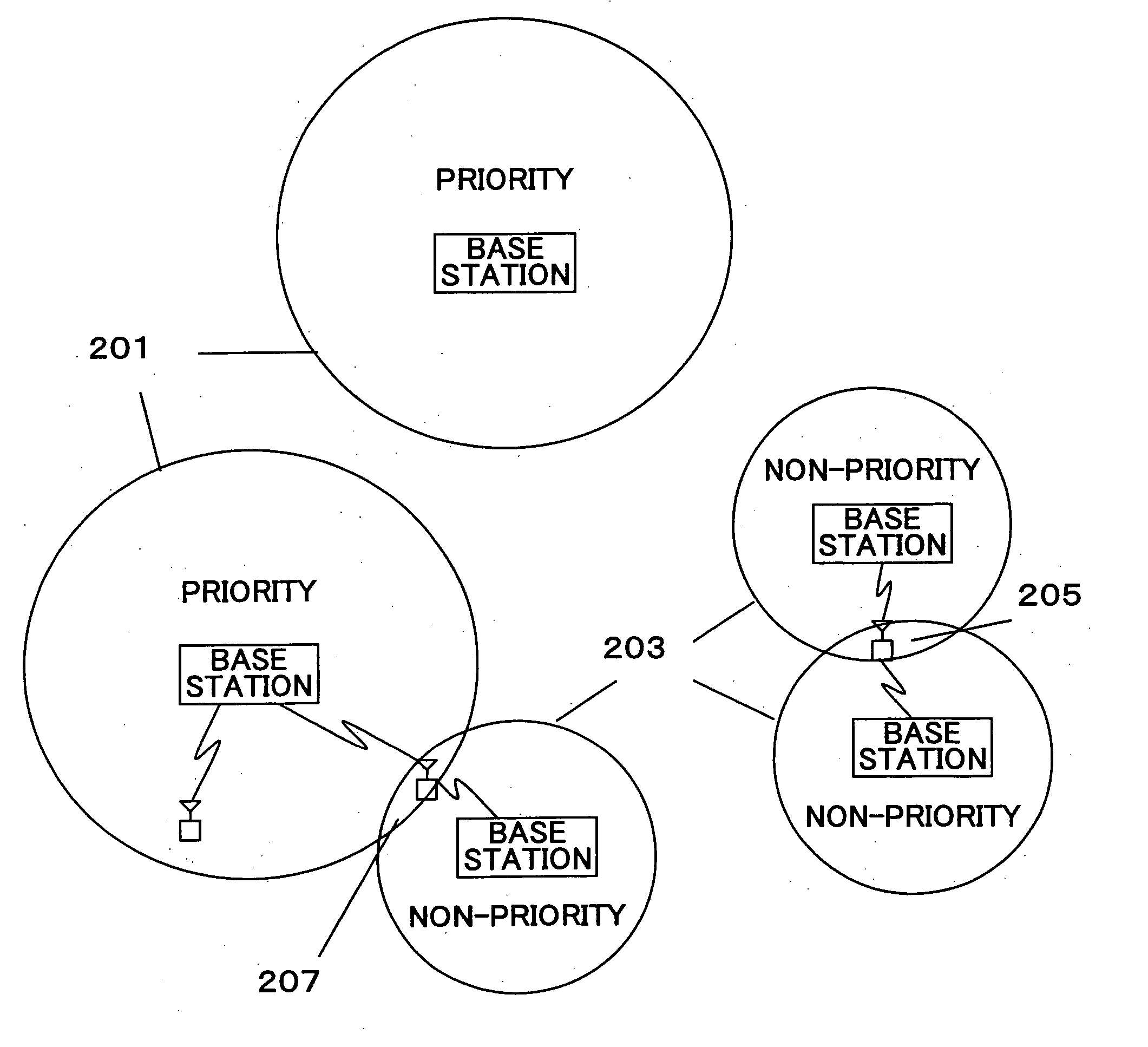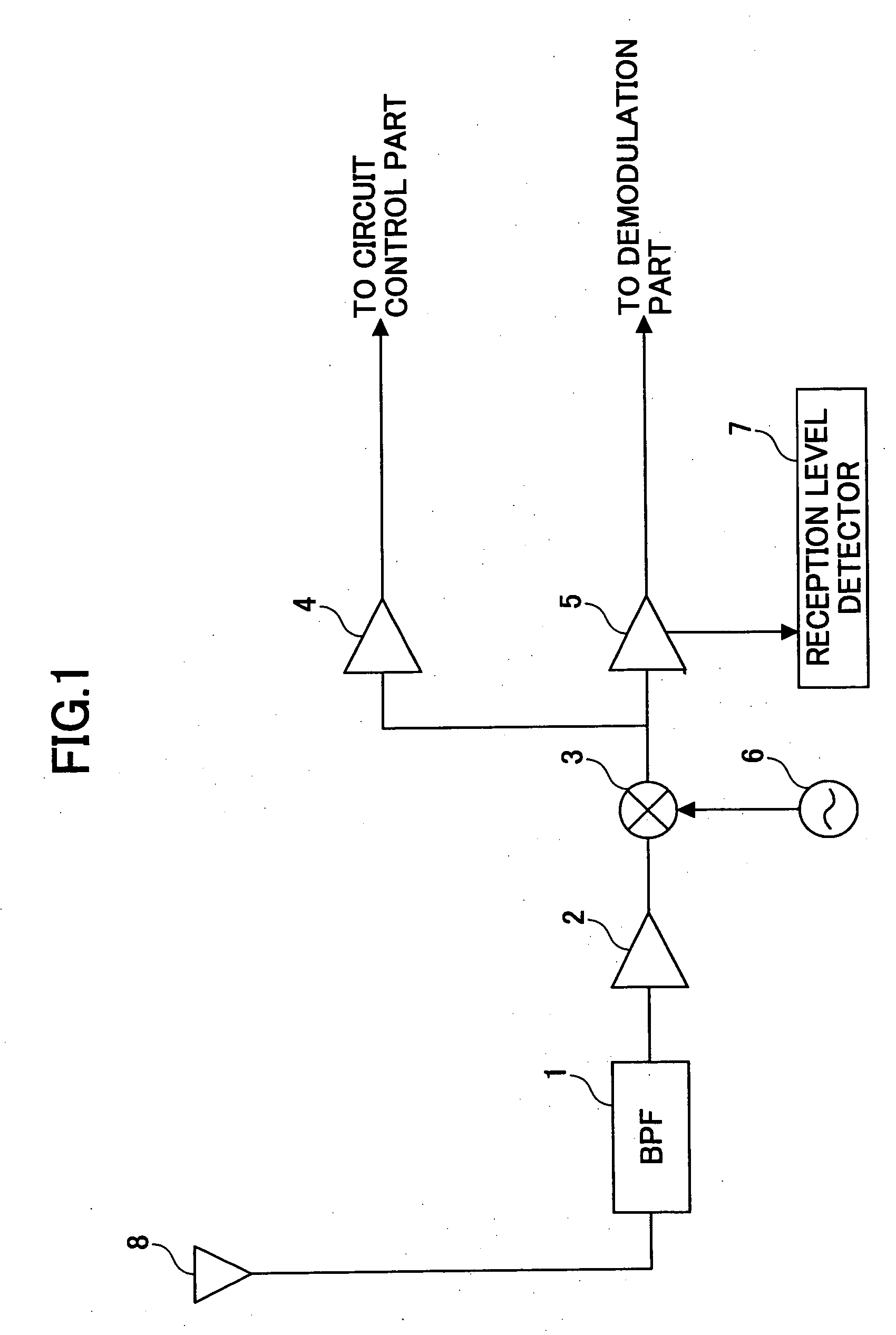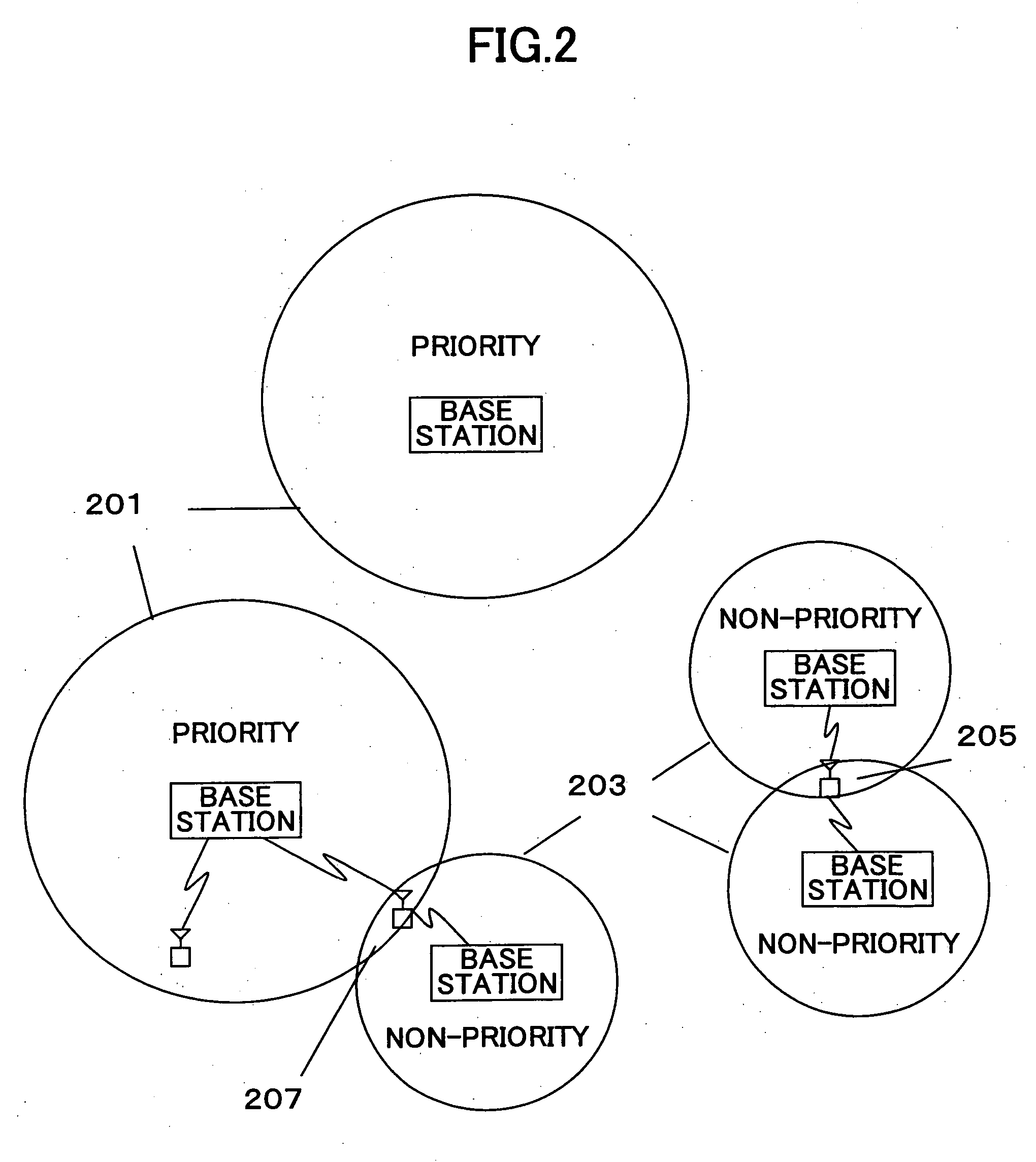Controller and transmission and reception method for radio communications in a transceiver for radio communications
a technology of radio communication and controller, applied in the direction of power management, frequency-division multiplex, wireless commuication services, etc., can solve the problems of reducing signal transmission efficiency, signal reception error occurring frequently, and reducing the opportunity to transmit a signal
- Summary
- Abstract
- Description
- Claims
- Application Information
AI Technical Summary
Benefits of technology
Problems solved by technology
Method used
Image
Examples
first embodiment
[0035] [First Embodiment]FIG. 4 is a block diagram showing a transceiver 10 of a non-priority system according to the present invention. The non-priority system transceiver 10 includes an antenna 101, an RF circuit 103, a reception level measurement circuit 105, a cyclic autocorrelation value calculator circuit 107, and a data transmission authorization part 109. In the case of performing communications using carrier sensing according to CSMA, in the transceiver 10, a signal received through the antenna 101 is subjected to power amplification, band limiting, and down conversion through the RF circuit 103 so as to be converted into a baseband signal (not graphically illustrated).
[0036] The reception level measurement circuit 105 measures the level of the received signal from the baseband signal obtained as a result of the conversion. Further, the cyclic autocorrelation value calculator circuit 107 calculates a cyclic autocorrelation value using the baseband signal. Using both the mea...
second embodiment
[0052] [Second Embodiment]
[0053] Next, a description is given of a method of determining, by a chi-square test using a cyclic autocorrelation value, whether the signal of a priority system is contained in a received signal according to a second embodiment of the present invention. The transceiver 10 of FIG. 4 is also employable in this case. The data transmission authorization part 109 determines whether to authorize data transmission based on a measured level of a reception signal and the result of conducting the chi-square test using a cyclic autocorrelation value.
[0054]FIG. 10 is a flowchart showing a control procedure according to this embodiment. As in the first embodiment, first, in step S1001, the level of a received signal is measured, and in step S1003, the reception level value of the received signal is compared with a reception level threshold. If the measured reception level value is greater than or equal to the reception level threshold (YES in step S1003), in step S10...
third embodiment
[0059] [Third Embodiment]
[0060] Next, a description is given, with reference to FIG. 13, of a method of further reducing interference with a priority system by controlling the transmission power of a non-priority system in the case where the non-priority system is authorized to perform transmission by the method of the first or second embodiment according to a third embodiment of the present invention. FIG. 13 is a block diagram showing a transceiver 30 of a non-priority system according to the third embodiment. Like the transceiver 10 of FIG. 4, the transceiver 30 includes an antenna 301, an RF circuit 303, a reception level measurement circuit 305, a cyclic autocorrelation value calculator circuit 307, and a data transmission authorization part 309. These components operate in the same manner as the corresponding components of the transceiver 10. The transceiver 30 further includes a data transmission power determination part 313 that controls transmission power for data transmiss...
PUM
 Login to View More
Login to View More Abstract
Description
Claims
Application Information
 Login to View More
Login to View More - R&D
- Intellectual Property
- Life Sciences
- Materials
- Tech Scout
- Unparalleled Data Quality
- Higher Quality Content
- 60% Fewer Hallucinations
Browse by: Latest US Patents, China's latest patents, Technical Efficacy Thesaurus, Application Domain, Technology Topic, Popular Technical Reports.
© 2025 PatSnap. All rights reserved.Legal|Privacy policy|Modern Slavery Act Transparency Statement|Sitemap|About US| Contact US: help@patsnap.com



